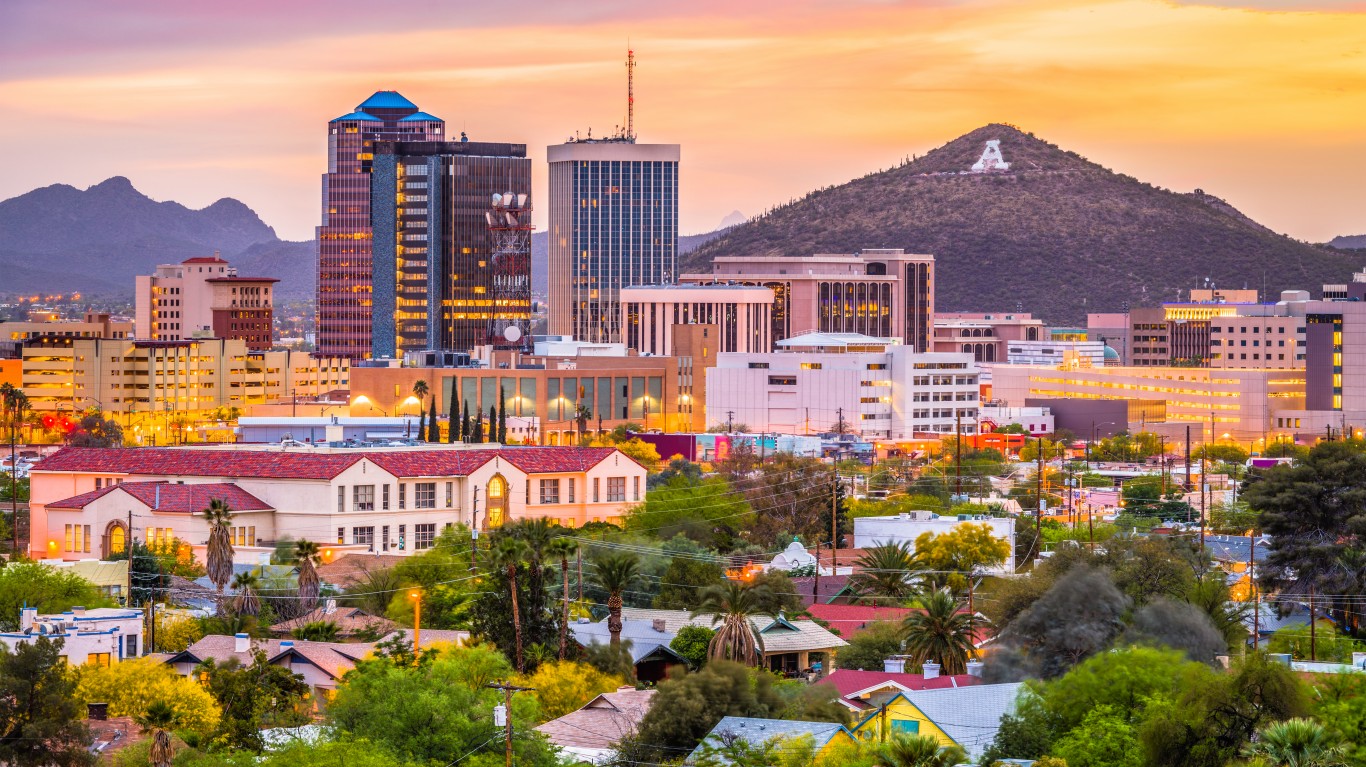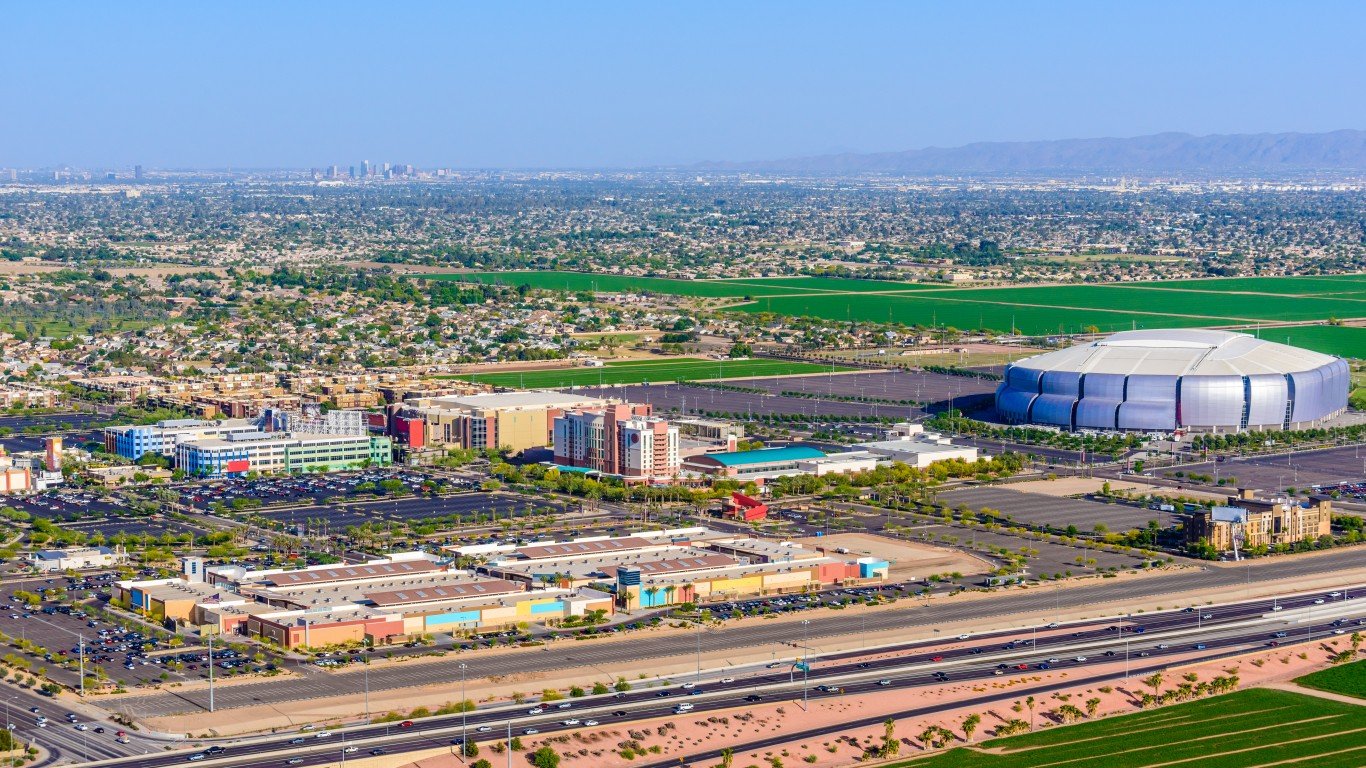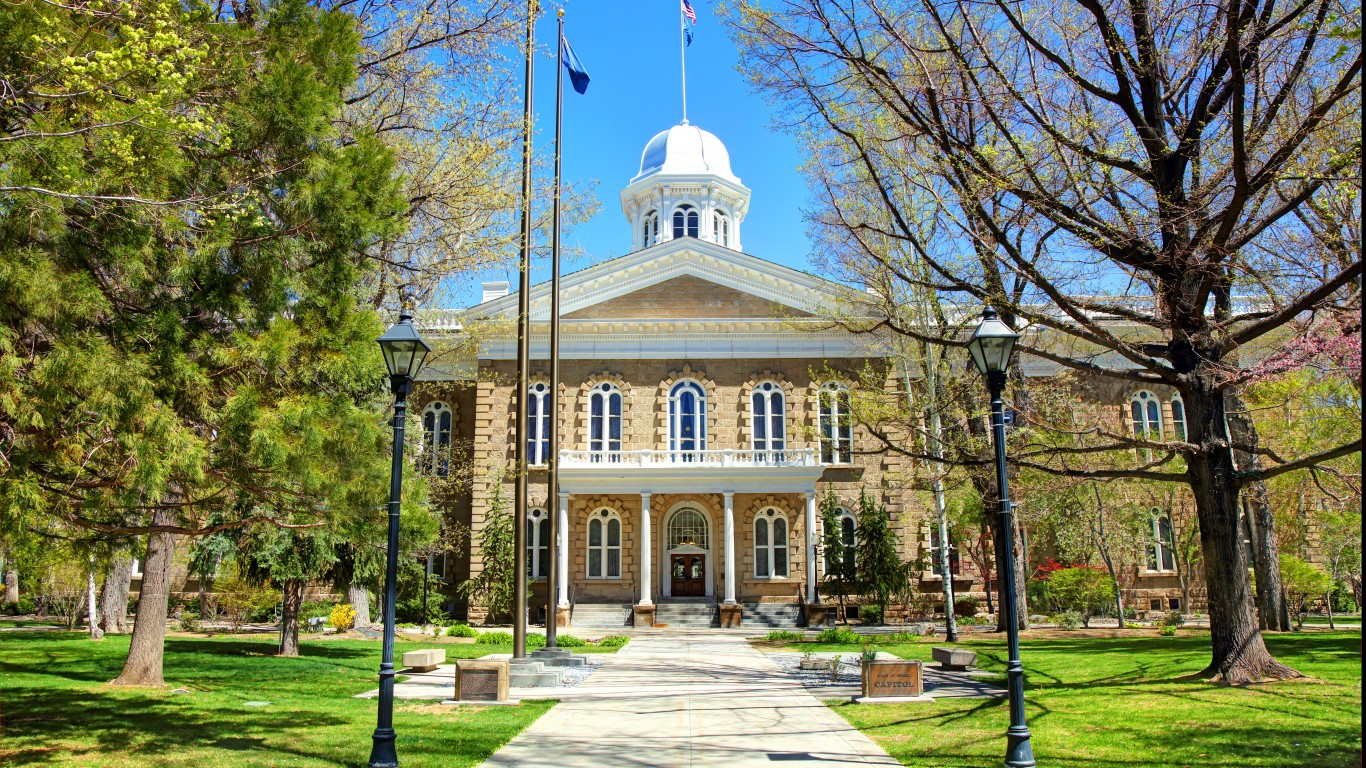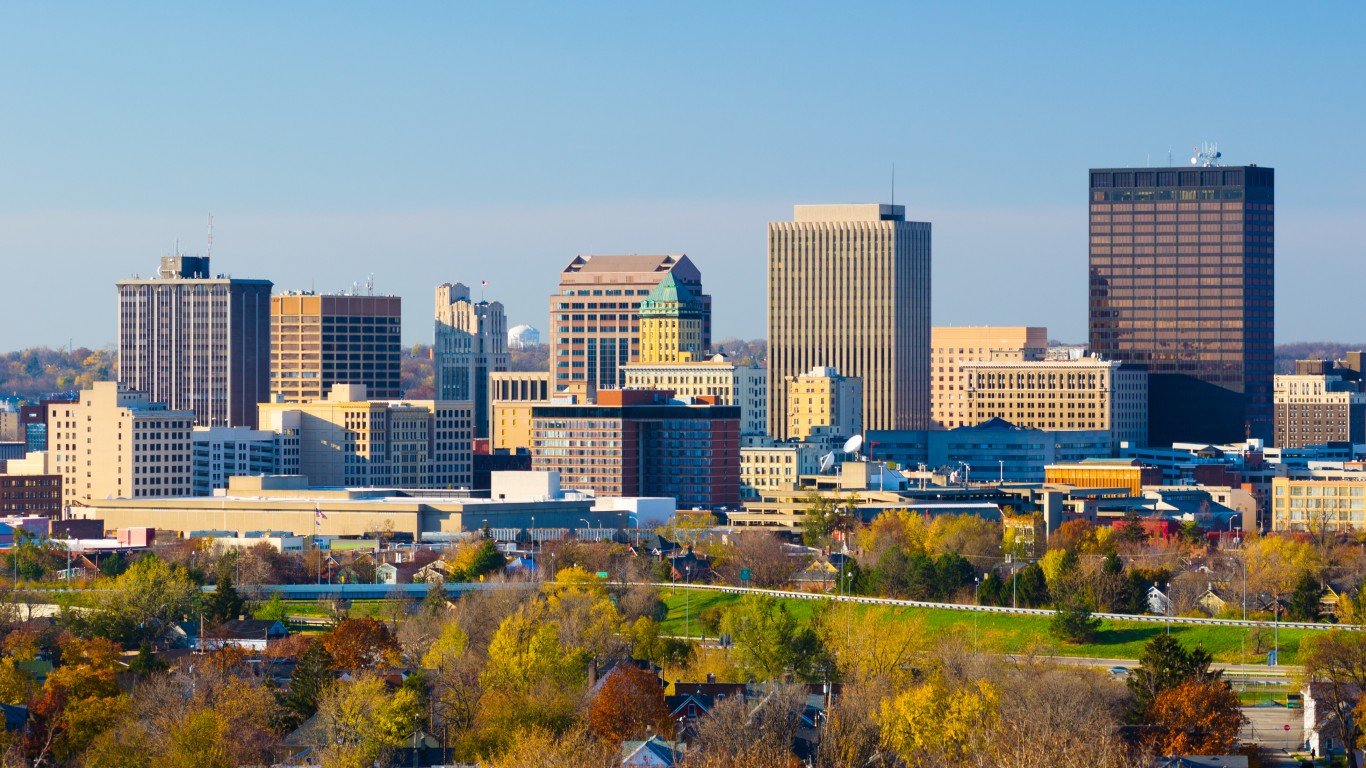
20. Tucson, Arizona
> City covered by hazardous waste areas: 3.9% (9.3 sq. mi.)
> Number of hazardous waste areas: 1
> Largest hazardous waste area: Tucson International Airport Area
> Total population: 545,340
The site includes the Tucson International Airport, nearby residential areas, and a portion of the Tohono Oʼodham Nation Native American reservation. There is also a federally-owned weapons manufacturing facility operated under contract with Raytheon Missiles & Defense. Soil and groundwater contamination in the area comes from former aircraft and electronic manufacturing, aircraft maintenance, and chemical leaks from old unlined landfills.

19. Glendale, Arizona
> City covered by hazardous waste areas: 4.4% (2.9 sq. mi.)
> Number of hazardous waste areas: 1
> Largest hazardous waste area: Luke Air Force Base
> Total population: 250,290
Luke Air Force Base is located west of Phoenix and is an active site for advanced fighter pilot training. As with other aircraft-focused sites, the base contaminated the soil and possibly the groundwater due to past waste disposal practices. The site was cleaned up, and in 2002 the EPA removed it from its Superfund program’s national priorities list.

18. Carson City, Nevada
> City covered by hazardous waste areas: 4.6% (7.2 sq. mi.)
> Number of hazardous waste areas: 1
> Largest hazardous waste area: Carson River Mercury Site
> Total population: 55,244
The Carson River Mercury Site is the former area of the Comstock Lode, the discovery of natural deposits of silver in 1859 in and around Nevada’s capital Carson City and nearby Dayton and Virginia City. Miners used mercury in gold and silver extraction, a process that released an estimated 14 million pounds of mercury from an estimated 236 mills in western Nevada. The waste area encompasses 330 square miles, a portion of which within Carson City borders, and 130 river miles.

17. San Jose, California
> City covered by hazardous waste areas: 4.8% (8.7 sq. mi.)
> Number of hazardous waste areas: 6
> Largest hazardous waste area: South Bay Asbestos Area
> Total population: 1,029,409
Landfills in the South Bay Asbestos Area accepted asbestos-containing pipe manufacturing material from 1953 to 1982. Furthermore, a ring levee in the area was built using quarried rock that contained naturally occurring asbestos. Worn down by rain and wind, this asbestos has been found in nearby unpaved truck yards. Though the EPA and the U.S. Army Corps of Engineers have since removed the levee and paved the truck yards, the landfill caps require soil management plans in perpetuity since the asbestos-containing materials remain.

16. Dayton, Ohio
> City covered by hazardous waste areas: 5.8% (3.3 sq. mi.)
> Number of hazardous waste areas: 4
> Largest hazardous waste area: Wright-Patterson Air Force Base
> Total population: 140,444
The active Wright Patterson Air Force Base east of the city of Dayton contains potential environmental contamination from 13 landfills, 12 disposal zones, nine fuel or chemical spill sites, six coal storage facilities, five fire-training areas, four chemical burial sites, and two underground storage tanks. Cleanup efforts have included removing tanks and groundwater treatments.





